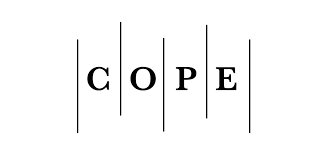Analysis of Image Quality Assessment Methods and Metrics: A Comprehensive Review
DOI:
https://doi.org/10.29304/jqcm.2023.15.3.1275Keywords:
Image quality, Metrics evaluation,, Machine learning, Preprocessing techniques, Image metrics, Image characteristicsAbstract
The evaluation of metrics, the effects of machine learning, and the use of preprocessing techniques for image enhancement constitute the essence of image quality. Through a thorough investigation, this study seeks to identify the core components of image quality. First, various measures for gauging image quality are compared to see how well they work. These metrics offer precise evaluations of aspects of a picture such as sharpness, contrast, and color integrity. The effect of machine learning techniques on the quality of images is then examined. The study investigates the use of machine learning approaches to improve image quality by training models on substantial datasets and tailoring them for certain tasks. In addition, the function of preprocessing methods in picture enhancement is investigated. Before further processing or analysis, the image quality is improved using various techniques, including noise reduction, image denoising, and local entropy filtering. The findings of this work offer important new perspectives on the assessment of image quality measurements, the potential of machine learning for image enhancement, and the significance of preprocessing methods in producing higher image quality.
Downloads
References
[2] Y. Ye, W. Zeng, Q. Shen, X. Zhang, and Y. Lu, “The visual quality of streets: A human-centred continuous measurement based on machine learning algorithms and street view images,” Environ. Plan. B Urban Anal. City Sci., vol. 46, no. 8, pp. 1439–1457, 2019, doi: 10.1177/2399808319828734.
[3] M. Abdellatif, H. Peel, A. G. Cohn, and R. Fuentes, “Combining block-based and pixel-based approaches to improve crack detection and localisation,” Automation in Construction, vol. 122. 2021. doi: 10.1016/j.autcon.2020.103492.
[4] S. Dodge and L. Karam, “Understanding how image quality affects deep neural networks,” 2016 8th Int. Conf. Qual. Multimed. Exp. QoMEX 2016, 2016, doi: 10.1109/QoMEX.2016.7498955.
[5] V. Balasubramaniam, “Artificial Intelligence Algorithm with SVM Classification using Dermascopic Images for Melanoma Diagnosis,” J. Artif. Intell. Capsul. Networks, vol. 3, no. 1, pp. 34–42, 2021, doi: 10.36548/jaicn.2021.1.003.
[6] A. M. Padole et al., “Development and validation of image quality scoring criteria (IQSC) for pediatric CT: a preliminary study,” Insights Imaging, vol. 10, no. 1, Dec. 2019, doi: 10.1186/s13244-019-0769-8.
[7] D. R. Sarvamangala and R. V. Kulkarni, “Convolutional neural networks in medical image understanding: a survey,” Evol. Intell., vol. 15, no. 1, pp. 1–22, 2022, doi: 10.1007/s12065-020-00540-3.
[8] K. Grm, V. Struc, A. Artiges, M. Caron, and H. K. Ekenel, “Strengths and weaknesses of deep learning models for face recognition against image degradations,” IET Biometrics, vol. 7, no. 1, pp. 81–89, 2018, doi: 10.1049/iet-bmt.2017.0083.
[9] B. C. International Conference on Computer Communications and Networks 26. 2017 Vancouver, Institute of Electrical and Electronics Engineers, IEEE Communications Society, International Conference on Computer Communications and Networks 26 2017.07.31-08.03 Vancouver, International Conference on Computer Communication and Networks 26 2017.07.31-08.03 Vancouver, and ICCCN 26 2017.07.31-08.03 Vancouver, ICCCN 2017 2017 26th International Conference on Computer Communications and Networks (ICCCN) : July 31-August 3, 2017, Vancouver, Canada.
[10] T. J. W. M. Janssen and F. J. J. Blommaert, “A computational approach to image quality.” [Online]. Available: www.elsevier.nl/locate/displa
[11] C. Singla, P. K. Sarangi, A. K. Sahoo, and P. K. Singh, “Deep learning enhancement on mammogram images for breast cancer detection,” Mater. Today Proc., vol. 49, no. xxxx, pp. 3098–3104, 2020, doi: 10.1016/j.matpr.2020.10.951.
[12] O. Zelmati, B. Bondžulić, B. Pavlović, I. Tot, and S. Merrouche, “Study of subjective and objective quality assessment of infrared compressed images,” J. Electr. Eng., vol. 73, no. 2, pp. 73–87, 2022, doi: 10.2478/jee-2022-0011.
[13] M. Ponomarenko, S. G. Bahnemiri, and K. Egiazarian, “Transfer learning for no-reference image quality metrics using large temporary image sets,” IS T Int. Symp. Electron. Imaging Sci. Technol., vol. 34, no. 14, pp. 1–5, 2022, doi: 10.2352/EI.2022.34.14.COIMG-219.
[14] Q. Gao et al., “Blind CT Image Quality Assessment via Deep Learning Framework,” 2019 IEEE Nucl. Sci. Symp. Med. Imaging Conf. NSS/MIC 2019, pp. 22–25, 2019, doi: 10.1109/NSS/MIC42101.2019.9059777.
[15] P. Andersson, J. Nilsson, T. Akenine-Möller, M. Oskarsson, K. Åström, and M. D. Fairchild, “FLIP: A Difference Evaluator for Alternating Images,” Proc. ACM Comput. Graph. Interact. Tech., vol. 3, no. 2, 2020, doi: 10.1145/3406183.
[16] W. Lyu, W. Lu, and M. Ma, “No-reference quality metric for contrast-distorted image based on gradient domain and HSV space,” J. Vis. Commun. Image Represent., vol. 69, p. 102797, 2020, doi: 10.1016/j.jvcir.2020.102797.
[17] Y. Fang, H. Zhu, Y. Zeng, K. Ma, and Z. Wang, “Perceptual quality assessment of smartphone photography,” Proc. IEEE Comput. Soc. Conf. Comput. Vis. Pattern Recognit., pp. 3674–3683, 2020, doi: 10.1109/CVPR42600.2020.00373.
[18] M. L. Baptista, K. Goebel, and E. M. P. Henriques, “Relation between prognostics predictor evaluation metrics and local interpretability SHAP values,” Artif. Intell., vol. 306, p. 103667, 2022, doi: 10.1016/j.artint.2022.103667.
[19] W. Sun et al., “Machine learning–assisted molecular design and efficiency prediction for high-performance organic photovoltaic materials,” Sci. Adv., vol. 5, no. 11, pp. 1–9, 2019, doi: 10.1126/sciadv.aay4275.
[20] G. R. MacHado, E. Silva, and R. R. Goldschmidt, “Adversarial Machine Learning in Image Classification: A Survey Toward the Defender’s Perspective,” ACM Comput. Surv., vol. 55, no. 1, pp. 1–35, 2021, doi: 10.1145/3485133.
[21] K. De and M. Pedersen, “Impact of Colour on Robustness of Deep Neural Networks,” Proc. IEEE Int. Conf. Comput. Vis., vol. 2021-Octob, pp. 21–30, 2021, doi: 10.1109/ICCVW54120.2021.00009.
[22] J. Rasheed, “Analyzing the Effect of Filtering and Feature-Extraction Techniques in a Machine Learning Model for Identification of Infectious Disease Using Radiography Imaging,” Symmetry (Basel)., vol. 14, no. 7, 2022, doi: 10.3390/sym14071398.
[23] T. He and X. Li, “Image quality recognition technology based on deep learning,” J. Vis. Commun. Image Represent., vol. 65, Dec. 2019, doi: 10.1016/j.jvcir.2019.102654.
[24] A. Mikołajczyk and M. Grochowski, “Data augmentation for improving deep learning in image classification problem,” 2018 Int. Interdiscip. PhD Work. IIPhDW 2018, no. August 2019, pp. 117–122, 2018, doi: 10.1109/IIPHDW.2018.8388338.
[25] P. Majumdar, S. Mittal, R. Singh, and M. Vatsa, “Unravelling the Effect of Image Distortions for Biased Prediction of Pre-trained Face Recognition Models,” Proc. IEEE Int. Conf. Comput. Vis., vol. 2021-Octob, pp. 3779–3788, 2021, doi: 10.1109/ICCVW54120.2021.00422.
[26] H. Talebi and P. Milanfar, “Learning to Resize Images for Computer Vision Tasks,” Proc. IEEE Int. Conf. Comput. Vis., pp. 487–496, 2021, doi: 10.1109/ICCV48922.2021.00055.
[27] J. C. Reinhold, B. E. Dewey, A. Carass, and J. L. Prince, “Evaluating the impact of intensity normalization on MR image synthesis,” no. March 2019, p. 126, 2019, doi: 10.1117/12.2513089.
[28] D. N. H. Thanh, L. T. Thanh, N. N. Hien, and S. Prasath, “Adaptive total variation L1 regularization for salt and pepper image denoising,” Optik (Stuttg)., vol. 208, p. 163677, 2020, doi: 10.1016/j.ijleo.2019.163677.
[29] Sonali, S. Sahu, A. K. Singh, S. P. Ghrera, and M. Elhoseny, “An approach for de-noising and contrast enhancement of retinal fundus image using CLAHE,” Opt. Laser Technol., vol. 110, pp. 87–98, Feb. 2019, doi: 10.1016/j.optlastec.2018.06.061.
[30] J. Nishimura, T. Gerasimow, R. Sushma, A. Sutic, C. T. Wu, and G. Michael, “Automatic ISP image quality tuning using nonlinear optimization,” Proc. - Int. Conf. Image Process. ICIP, pp. 2471–2475, 2018, doi: 10.1109/ICIP.2018.8451818.
[31] K. P. K. and P. S. Aithal, “A Conceptual Study on Image Enhancement Techniques for Fingerprint Images,” Int. J. Appl. Eng. Manag. Lett., vol. 1, no. 1, pp. 63–72, 2017, doi: 10.47992/ijaeml.2581.7000.0006.
[32] X. Xie, P. Carré, C. Perrine, Y. Pousset, N. Zhou, and J. Wu, “Reduced-reference image quality metric based on statistic model in complex wavelet transform domain,” Signal Process. Image Commun., vol. 74, pp. 218–230, 2019, doi: 10.1016/j.image.2019.02.006.
[33] G. Hou, Y. Li, H. Yang, K. Li, and Z. Pan, “UID2021: An Underwater Image Dataset for Evaluation of No-Reference Quality Assessment Metrics,” ACM Trans. Multimed. Comput. Commun. Appl., vol. 19, no. 4, pp. 1–24, 2023, doi: 10.1145/3578584.
[34] J. S. Manoharan, “Study of Variants of Extreme Learning Machine (ELM) Brands and its Performance Measure on Classification Algorithm,” J. Soft Comput. Paradig., vol. 3, no. 2, pp. 83–95, 2021, doi: 10.36548/jscp.2021.2.003.
[35] H. A. Hussein, A. Amir, O. Majeed, and H. Almiahi, “Survey of Diabetic Retinopathy using Deep Learning techniques.”
[36] U. Sara, M. Akter, and M. S. Uddin, “Image Quality Assessment through FSIM, SSIM, MSE and PSNR—A Comparative Study,” J. Comput. Commun., vol. 07, no. 03, pp. 8–18, 2019, doi: 10.4236/jcc.2019.73002.
[37] Y. Fang, Y. Hu, M. Shao, T. Jin, L. Xie, and W. Kang, “yPerformance analysis of a backlight dimming method using weighted mean-square-error based on joint edge-saliency characteristics,” Displays, vol. 61, no. November 2018, p. 101927, 2020, doi: 10.1016/j.displa.2019.101927.
[38] H. Lee, S. H. Park, J. H. Yoo, S. H. Jung, and J. H. Huh, “Face recognition at a distance for a stand-alone access control system,” Sensors (Switzerland), vol. 20, no. 3, pp. 1–18, 2020, doi: 10.3390/s20030785.
[39] J. Kim, G. Yang, J. Kim, S. Lee, K. K. Kim, and C. Park, “Efficiently updating ecg-based biometric authentication based on incremental learning,” Sensors, vol. 21, no. 5, pp. 1–17, 2021, doi: 10.3390/s21051568.
[40] K. Mohan, A. Seal, O. Krejcar, and A. Yazidi, “Facial Expression Recognition Using Local Gravitational Force Descriptor-Based Deep Convolution Neural Networks,” IEEE Trans. Instrum. Meas., vol. 70, no. c, pp. 1–13, 2021, doi: 10.1109/TIM.2020.3031835.
[41] P. Zhang, Y. Ke, Z. Zhang, M. Wang, P. Li, and S. Zhang, “Urban land use and land cover classification using novel deep learning models based on high spatial resolution satellite imagery,” Sensors (Switzerland), vol. 18, no. 11, Nov. 2018, doi: 10.3390/s18113717.
[42] S. Athar and Z. Wang, “A Comprehensive Performance Evaluation of Image Quality Assessment Algorithms,” IEEE Access, vol. 7, pp. 140030–140070, 2019, doi: 10.1109/ACCESS.2019.2943319.
[43] H. Michalak and K. Okarma, “Improvement of image binarization methods using image preprocessing with local entropy filtering for alphanumerical character recognition purposes,” Entropy, vol. 21, no. 6, Jun. 2019, doi: 10.3390/e21060562.
[44] S. S. Bangaru, C. Wang, M. Hassan, H. W. Jeon, and T. Ayiluri, “Estimation of the degree of hydration of concrete through automated machine learning based microstructure analysis – A study on effect of image magnification,” Adv. Eng. Informatics, vol. 42, Oct. 2019, doi: 10.1016/j.aei.2019.100975.
[45] L. Wu et al., “Randomised controlled trial of WISENSE, a real-time quality improving system for monitoring blind spots during esophagogastroduodenoscopy,” Gut, vol. 68, no. 12, pp. 2161–2169, Dec. 2019, doi: 10.1136/gutjnl-2018-317366.
[46] Z. Ullah, M. U. Farooq, S. H. Lee, and D. An, “A hybrid image enhancement based brain MRI images classification technique,” Med. Hypotheses, vol. 143, Oct. 2020, doi: 10.1016/j.mehy.2020.109922.
[47] J. Coe and M. Atay, “Evaluating impact of race in facial recognition across machine learning and deep learning algorithms,” Computers, vol. 10, no. 9, Sep. 2021, doi: 10.3390/computers10090113.
[48] P. Wang, E. Fan, and P. Wang, “Comparative analysis of image classification algorithms based on traditional machine learning and deep learning,” Pattern Recognit. Lett., vol. 141, pp. 61–67, Jan. 2021, doi: 10.1016/j.patrec.2020.07.042.
[49] R. Sarki, K. Ahmed, H. Wang, Y. Zhang, J. Ma, and K. Wang, “Image Preprocessing in Classification and Identification of Diabetic Eye Diseases,” Data Sci. Eng., vol. 6, no. 4, pp. 455–471, 2021, doi: 10.1007/s41019-021-00167-z.
[50] H. A. Li, M. Zhang, Z. Yu, Z. Li, and N. Li, “An improved pix2pix model based on Gabor filter for robust color image rendering,” Math. Biosci. Eng., vol. 19, no. 1, pp. 86–101, 2022, doi: 10.3934/mbe.2022004.
[51] O. Rukundo, “Effects of Image Size on Deep Learning,” Electron., vol. 12, no. 4, Feb. 2023, doi: 10.3390/electronics12040985.













